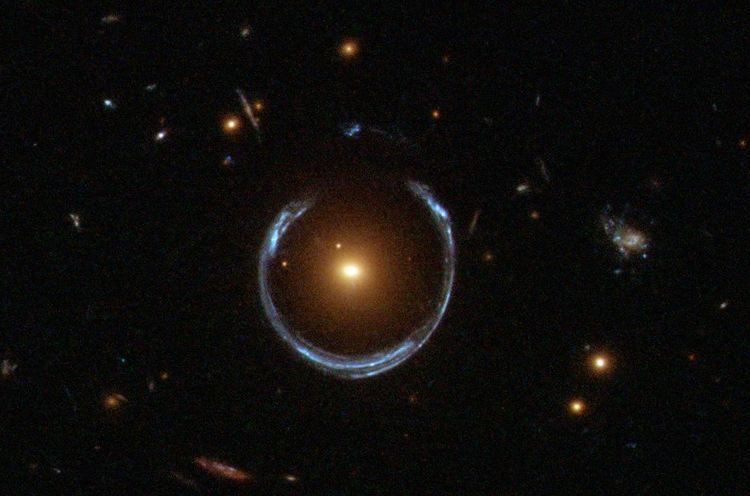 | ||
Strong gravitational lensing is a gravitational lensing effect that is strong enough to produce multiple images, arcs, or even Einstein rings. Generally, the strong lensing effect requires the projected lens mass density greater than the critical density
Contents
Galaxy lensing
The foreground lens is a galaxy. When the background source is a quasar or resolved jet, the strong lensed images are usually point-like multiple images; When the background source is a galaxy or extended jet emission, the strong lensed images can be arcs or rings.
Cluster lensing
The foreground lens is a galaxy cluster. In this case, the lens is usually powerful enough to produce noticeable both strong lensing (multiple images, arcs or rings) and weak lensing effects (ellipticity distortions).
Mass profiles (DC problems)
Since gravitational lensing is an effect only depending on gravitational potential, it can be used to constrain the mass model of lenses. With the constraints from multiple images or arcs, a proposed mass model can be optimized to fit to the observables. The subgalactic structures currently interests lensing astronomers are the central mass distribution and dark matter halos.
Time delays (AC problems)
Since the light rays go through different paths to produce multiple images, they will get delayed by local potentials along the light paths. The time delay differences from different images can be determined by the mass model and the cosmological model. Thus, with observed time delays and constrained mass model, the cosmological constant like Hubble constant can be inferred.
